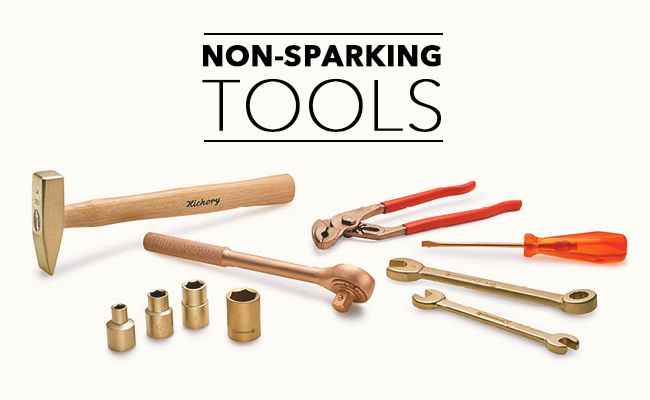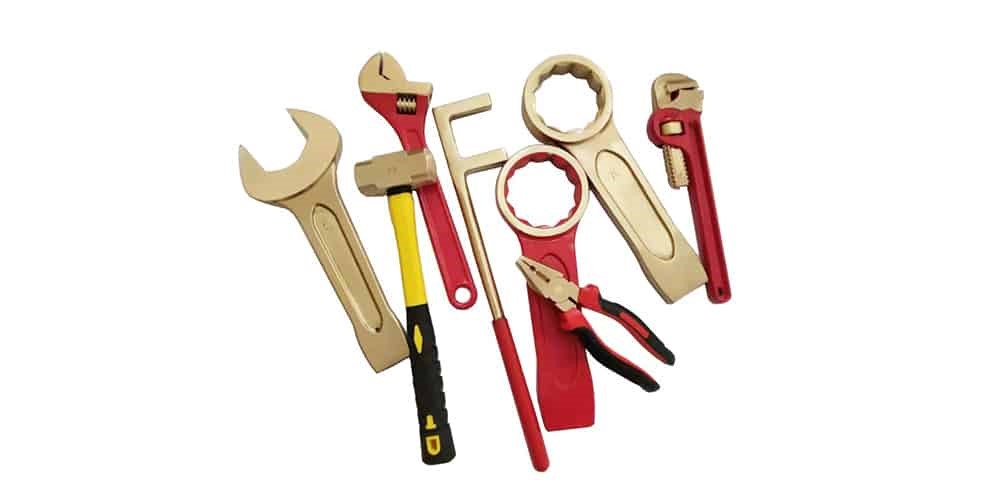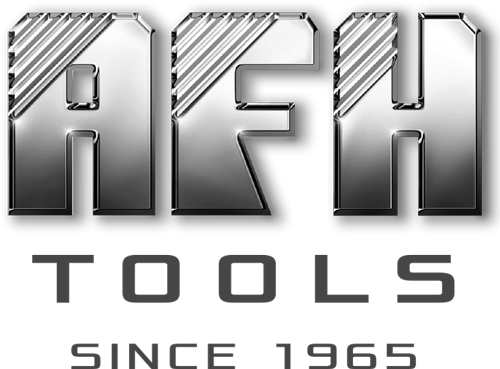WHY ARE NON-SPARKING TOOL CALLED SAFETY TOOLS?

Why are non-sparking tools called safety tools?
Workplace safety has become one of the industry's primary concerns. Particularly in ATEX-classified areas, certain requirements must be met in order to prevent occupational hazards.
The utilisation of precise hand instruments is one of the requirements that must be met.
By utilising precise hand tools, one of the main issues in ATEX-classified areas, friction ignition, can be resolved. This occurs when two metals come into contact and generate a spark that is sufficient to cause flames and explosion. To prevent such incidents and maintain safety as a top priority, the industrial sector must adopt anti-spark or non-sparking safety instruments.
What are non-sparking tools?
Non-Sparking Tools, also known as safety tools, are comprised of non-ferrous metals (metals that do not contain iron) and eliminate the danger of igniting a spark when used. Due to their ability to protect against fire and explosions in environments containing flammable gases, vapours, residues, dust, or liquids, they are referred to as safety instruments.
Non-Sparking Tools, also known as safety tools, are comprised of non-ferrous metals (metals that do not contain iron) and eliminate the danger of igniting a spark when used. Due to their ability to protect against fire and explosions in environments containing flammable gases, vapours, residues, dust, or liquids, they are referred to as safety instruments.
Utilising anti-sparking tools while working in confined spaces and environments with flammable materials is a best practise.
The materials used in their making
As was previously stated, the instruments are composed of non-ferrous metals such as bronze, brass, and alloys of copper-nickel, copper-aluminium, and copper-beryllium. Even non-metallic materials such as wood, plastic, and leather can be used to create these spark-resistant instruments.
Due to the use of non-ferrous metals in their construction, non-sparking tools are softer than standard tools manufactured from metals such as steel. The lower tensile strength and resistance of the instruments causes them to deteriorate more rapidly. One advantage, however, places them ahead of conventional hand tools: their ability to produce frigid sparks with insufficient heat to ignite any substance.
Here is a summary of the properties that each material contributes to safety equipment:
Plastic: The nonmagnetic properties of plastic-made tools make them essential for professionals operating in ATEX zones.
Aluminium Copper: Lightweight and renowned for its reliability and durability.
Beryllium copper: It has a tensile strength between 1280 and 1480 MPa, which makes it the strongest non-sparking material.
Brass: Brass-made tools are more durable and aesthetically pleasing. They are a little costly, but well worth the cost.
Bronze: Conductive, but non-ignitable. They can be included in your toolkit and assist you in performing industrial tasks safely.
How to use non-sparking safety instruments properly
Here are some guidelines for using safety equipment correctly and ensuring their durability.
- Do not place tools in direct contact with acetylene, particularly in the presence of water, as doing so will result in the formation of extremely hazardous explosive acetals.
- Sharpen these tools frequently using the standard procedures and while donning the required face and hand protection.
- After each use, the tools must be meticulously cleaned to ensure that no ferrous contaminants remain on their surface, which could compromise their non-ignition properties.
- Ensure that your ATEX industrial environment has a ventilation system that effectively removes hazardous and combustible vapours, dust, and residues from the air.
Final Thoughts
Finally, non-sparking tools are referred to as safety tools since they are intended to avoid fires and explosions in potentially hazardous conditions. Traditional metal tools, when used in regions where flammable or explosive materials are present, could generate sparks that can ignite the materials and cause an accident. Non-sparking tools are built of materials that do not produce sparks when struck against other metals, such as bronze, brass, and copper-beryllium alloys. If you're seeking for high-quality non-sparking tools in Dubai, go no further than AFH Tools. They provide a diverse assortment of non-sparking tools designed to fulfil the needs of various sectors and applications.


